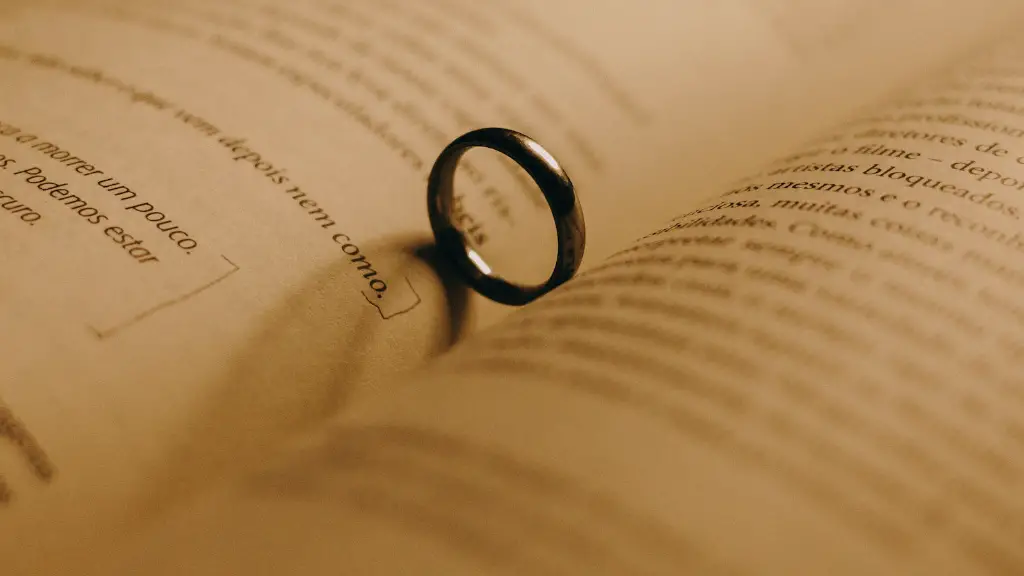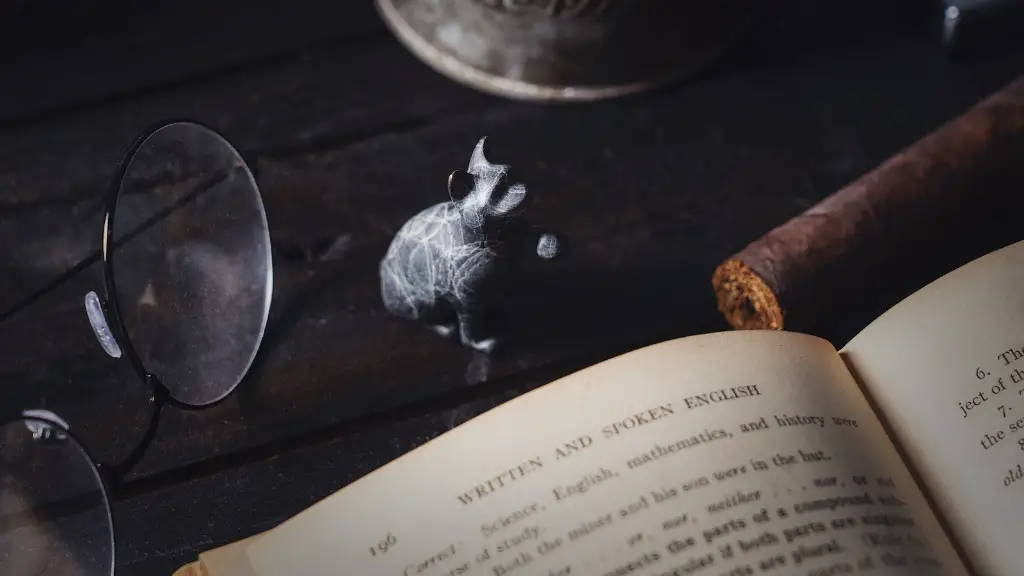Metaphors
Writing poetry that doesn’t rhyme can be challenging, but it’s not impossible. You can express yourself and create beautiful pieces of art without relying on rhyme. Metaphors are an excellent starting point. A metaphor is an expression which uses one concept to articulate another in order to create a tangible picture in the readers mind. It’s “a figure of speech in which a word or phrase is applied to an object or action to which it is not literally applicable” 1. Metaphors allow poets to express their ideas, thoughts and experiences in a way that is vivid and meaningful.
For example, if you’re writing a poem about a broken heart, rather than saying your heart is broken, you could say that your heart is shattered glass or rubble. This type of imagery provides readers with intense insights into the poet’s emotions. Metaphors can also be used to paint a picture of the physical world. For example, referring to a sunset as the “breath of God” or the ocean as “the keeper of secrets” or “the Infinite”.
Narrative Imagery
Narrative imagery is a form of writing that analyzes human experiences by illustrating events and creating a story. In order to create critical empathy from the reader, poets use narrative imagery to take the reader through a journey. This can include honoring the story of a particular person, highlighting events in history, or conveying a sense of justice. In doing so, readers can viscerally comprehend and internalize the poet’s message.
When writing narrative imagery, poets don’t need to include the typical elements of storytelling. Although some authors may choose to include characters and a linear story, others may focus on conveying a message through abstract imagery and emotion. For example, if a poet wants to focus on the struggle of being a refugee, they could explore this story by exploring the feelings of fear and loss while also describing the journey and experiences of a refugee.
Descriptive Writing
Descriptive writing is a great tool to use when writing poetry without rhyme. Writers often use descriptive writing to enhance the reader’s experience and understanding by providing vivid details and insight into the poem’s setting, characters, and emotions. For example, rather than simply providing a description of a sunset, the poet could use descriptive writing to include the emotions, sights, sounds, and smells that come with the experience of a sunset, creating a vivid image in the reader’s mind.
Using descriptive writing, poets can also provide vivid insights into their experiences and how they perceive the world. This is particularly effective for poets who want to explore personal themes and focus on poignant and intimate moments from their life. By providing a descriptive account, poets can engage readers on a more intimate and personal level.
Similes And Alliteration
Similes and alliteration are powerful tools when writing poetry that doesn’t rhyme. Similes are an interesting way to convey comparisons between two different objects or concepts without using rhyme. For example, if a poet wanted to emphasize the loneliness of an deserted area, they could use a simile and say something like “the silence was as empty as a black hole.” This type of comparison creates an image in the reader’s mind and helps them to understand the poet’s intent.
Meanwhile, alliteration can help to create an interesting aural rhythm in the poem without relying on rhyme. For example, the poet can use words like “sweet sunshine”, “brilliantly bright” or “eternal evening” that all start with the same letter or sound.
Internal Rhyme
Although external rhyme is the most common form of rhyme in poetry, poets can still experiment with internal rhyme. Internal rhyme is when two or more words in the same line rhyme with one another. For example, “In furious flames I’m flying free”. This type of rhyme still provides a nice auditory texture without relying on external rhymes.
Poets also have the option of using assonance and consonance when writing non-rhyming poetry. Assonance is when two or more words share the same vowel sound but not necessarily the same consonants- for example, “calm” and “fool”. Consonance is when two adjacent words share the same letter or sound- for example, “hot shot” or “puff puff”.
Line Lengths And Word Choice
Line lengths and word choice play an important role in writing poetry. Line lengths can vary from poem to poem and poets are free to experiment with short and long lines. This variance can help to create a varied and interesting rhythm to the piece, regardless of whether it’s rhyming or not. Word choice also plays a key role in creating an interesting rhythm as certain words tend to flow better together than others.
For example, when writing without rhyme, poets should focus on using vivid language, evocative words and creative phrasing. Using creative phrasing is particularly important as it allows poets to create a unique and thought-provoking rhythm to the poem. A poem that’s written with the right combination of line lengths, word choice and phrasing can be just as enjoyable to read as a rhyming poem.
Evoking Emotion
Poetry can be an incredibly powerful form of expression, especially when it comes writing without rhyme. By exploring emotions and capturing detailed images and stories, poets can create pieces that evoke strong emotions in the reader.
It’s important to note that not all emotions can be conveyed through words. Some emotions are too complex and intense to be expressed fully in words. This is where sensory details come in. By including sensory details such as smell, sight, sound and touch, poets can create vivid mental images in the reader’s mind and evoke strong emotions.
For example, if a poet is writing about the trauma of war, they may include sensory details such as the sounds of gunshots, the smell of smoke and the fear that comes with the experience of being in combat. This type of imagery creates a vivid and visceral experience for the reader and can help to evoke strong emotions in the reader.
Experiment With Forms
Experimenting with different forms is one of the best ways to create interesting poetry without relying on rhyme. Poets can explore different forms such as the sestina, which involves reusing the same six words in a set pattern throughout the poem. Another form to explore is the cinquain, which consists of five lines in a specific pattern. A third form to consider is the villanelle, which is a 19 line poem written in two repeating rhymes. Exploring different forms is a great way to create whimsical and interesting poems.
Poets can also experiment with free verse, which is a form that doesn’t have a certain meter or rhyme pattern and allows you to explore abstract concepts, feelings and thoughts. Free verse is an excellent form to explore when writing non-rhyming poetry as it allows poets to create unique pieces that freely express their emotions, thoughts and experiences.
Sonnets
Although sonnets are typically known as a rhyming poem, poets also have the option to write sonnets without rhyme. Non-rhyming sonnets have a different structure than traditional sonnets, as they lack the typical rhyming pattern. In place of the traditional rhyme, poets use different techniques such as similes and metaphors to create a varied and interesting auditory experience.
The main elements of a sonnet remain the same: the length of the poem, which is typically 14 lines, and the specific structure, which involves a volta or turning point. The volta is a stylistic move involving a shift in direction or perspective in the middle of the poem. Writing non-rhyming sonnets can be a fun challenge, as it allows poets to explore a tried-and-true form while still being able to experiment with different words and phrasings.
Haiku
Haiku is a form of Japanese poetry that doesn’t require rhyme. It’s typically composed of three lines, with the first and third lines consisting of five syllables and the second line having seven syllables. The syllable count isn’t as important as the overall size of the poem, which is typically no more than 17 syllables.
The style of haiku is normally focused on nature and nature’s cycles. This can be a fun form to explore and can help poets to focus on the beauty of nature and the smaller moments that often go unnoticed.
Conclusion
Writing poetry without rhyme doesn’t have to be difficult. By exploring different techniques such as metaphors, narrative imagery, similes, and alliteration, poets can create vivid and meaningful pieces that evoke strong emotions in the reader. Experimenting with new forms and making use of sensory details are also great ways to create pieces of poetry that don’t rely on rhyme. With the right combination of words and techniques, poets can create stunning works of art.
1 https://www.dictionary.com/browse/metaphor


